#bristly insects
Explore tagged Tumblr posts
Text
Bristleflies are Great Pollinators that Can be Found All Over
Bristles and Stamens Among my favorites in the insect world are the pollinators. Even though bees have probably gotten the most attention as pollinators, there are hundreds of other types of insects, birds, and even some mammals that contribute significantly to the vital process of pollination. Many of them are quite pretty (i.e. butterflies, hummingbirds, etc), but some of them aren’t really.…
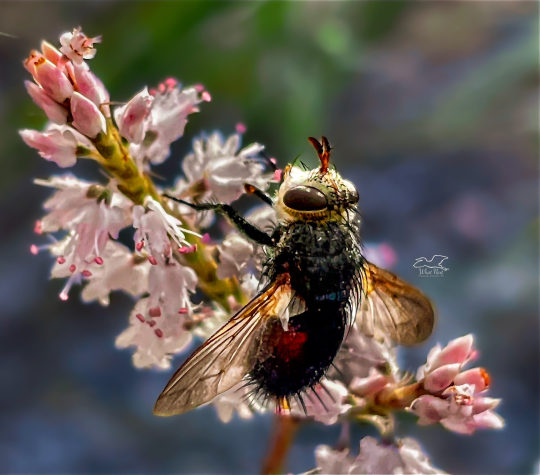
View On WordPress
#bristle flies#bristle flies as pollinators#bristle fly photographs#bristly insects#flies#flies as pollinators#Florida bristle flies#Florida insects#insect photographs#insect photography#insect pollinators#insects#macro photographs#macro photography#photography#pollenators#pollinating insects#pollinator insects#pollinator photographs#pollinator photography#southern bristle flies#ugly insects
0 notes
Photo

@apostleoforder submitted: hello! i’m having trouble identifying this caterpillar(?) from [removed] [please remove location!]. it certainly moved like a caterpillar, but anytime i looked for results online, i got ones that didn’t have the little hairs this fella does.

i hope the quality is good enough here, but there was a little yellow thing attached to what i think is its rear-end. i tried to get a good look at its face by gently poking with a blade of grass, but as soon as i did it went down further into the grass (and i think spit a little?)

is this its head? i don’t know. i hope you can help me figure this out! thanks in advance!!
Hi! It’s a cutworm in the family Noctuidae, probably a bristly cutworm, Lacinipolia renigera - hence the little hairs! The head is on the right in these photos. The stuff coming out of the butt could either be defensive secretion or just poop. Their poop can look different depending on what they just ate and sometimes they’ll poop as a defensive mechanism which would make sense if you were poking at it.
95 notes
·
View notes
Text





2 notes
·
View notes
Text

"Borstenvieh", haarige Fliege an Goldrute.
0 notes
Text


one of my favorite bugs I've ever photographed, juriniopsis adusta. august 2021.
#insect photography#insects#flies#juriniopsis adusta#look at his bristly ass i love him#gray's photo tag
1 note
·
View note
Text
Spectember/Spectober 2024 #07: Mole Dino
Today's spec creature is a combination of a couple of submissions – James P. Quick asked for "a post-K/Pg relict dinosaur from pre-glaciation Antarctica", and an anonymous asked for "a subterranean (like, say, Talpa or Spalax) burrowing dinosaur":
At the time of the K/Pg mass extinction some of the small ornithopods that inhabited Late Cretaceous Antarctica had been developing increasingly complex burrowing behavior and a more generalist omnivorous diet than most other ornithischians – and, along with their ability to endure the long dark cold polar winters, this was juuust about enough for them to survive while the rest of their non-avian cohorts vanished.
They were very briefly a fairly successful disaster taxon in the devastated polar forests, but they were quickly displaced by other diversifying survivors and never really got another ecological foothold to regain anything close to the non-avian dinosaurs' former glory.
Instead the little ornithopods specialized even further for burrowing, spending more and more of their lives underground to avoid the increasing competition and predation from mammals and birds.

Now, well into the Cenozoic at the dawning of the Miocene, Cthonireliqua quicki is the very last representative of the non-avian dinosaurs. Small and stocky and mole-like, just 15cm long (~8"), it has muscular forelimbs with large shovel-like claws, a keratinous shield on its head, and a thick bristly tail where large fat reserves are stored.
Its eyes are almost completely absent, only vestigial remnants present under the skin of its face, and it navigates its extensive burrows using sensitive whisker-like filaments and its keen senses of hearing and smell. Still omnivorous like its ancestors, it feeds on whatever it comes across while tunneling – mainly worms, insects, smaller vertebrates, roots, and tubers.
Unfortunately for Cthonireliqua, and the rest of its Antarctic ecosystem, time is running out. Over the last few million years Antarctica's climate has been steadily cooling and drying, the continent has become fully isolated, and the Antarctic Circumpolar Current has formed. Glaciation is well underway in the continental interior, and the once-lush forests are shrinking away and being replaced with tundra.
Soon all evidence of these dinosaurs' existence will be buried under the ice.
#spectember#spectober#spectember 2024#speculative evolution#ornithopod#ornithischian#dinosaur#art#science illustration
148 notes
·
View notes
Text
I’ve got some minor beef with whoever wrote the fun fact for my Wild Republic anteater because this is a Giant Anteater… the only species of anteater that has a NON-PREHENSILE TAIL and look what they put 😭

No 👏no 👏no 👏no 👏😭
Giant anteaters have full, bristly, bushy tails. They are marvelous and adorable and very, very useful (camouflage, making shade, balance when on two feet, etc.) but they do not perform the same functions as the prehensile tail of other anteater species.
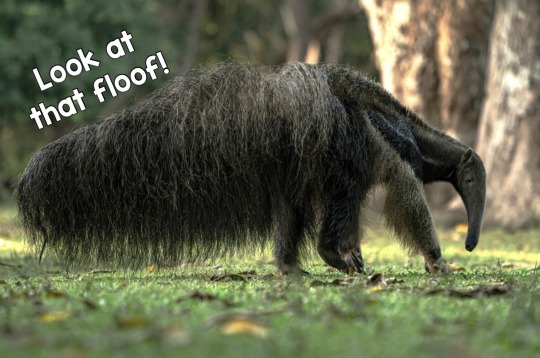
It CANNOT grasp things with its tail like silky anteaters or tamanduas can. It is NOT helpful when climbing; in fact, it is a deficit. Such as why they are much more terrestrial than their counterparts despite their ability to climb (they usually save this ability for traversing tall anthills, for example)

And the facts they passed up to put this one instead!!
Why not mention how their tongues are 2 feet long and can flick out of its mouth 150 times per minute??

Or how they swallow around 35,000 ants and termites whole each day because of their lack of teeth and fused jaw??

And even with that number of insects consumed per day, they never destroy a nest!! They always leave enough to repopulate so they can come back and eat from there again!!

Not to mention their strong foreclaws (which are up to four inches long) can tear open a termite mound that’s as solid as concrete! Their claws are so large they walk on their front knuckles!

Of course there’s more, but I’m going to stop here for the sake of looking semi-sane… but seriously, they are SO COOL

#my family didn’t want to hear about all this so now the internet has to instead#now to disassociate while I imagine how my fav characters would let me rant about all of this without telling me to ‘calm down’#I just want extremely accurate plushie versions of every animal in the entire world#is that too much to ask#special interest#christmas presents#anteater#giant anteater#animal facts#info dump#animals#zoo animals#tamandua#silky anteater#south america#neurodivergent#autistic things#autistic adult#actually autistic#autistic rambling#special interest dump#rambles#autism#asd#neurodiversity#neurodiverse stuff#stuffies#stuffed animals#plushies
115 notes
·
View notes
Text
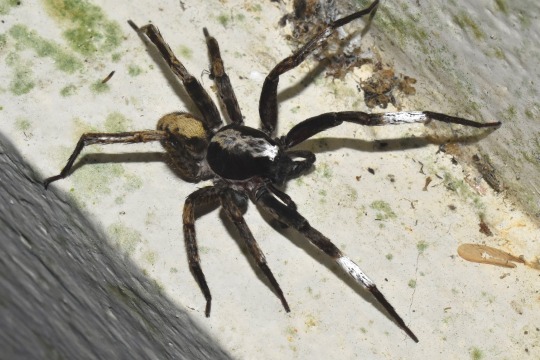
some more Singaporean arachnids: I saw a couple species of wandering spiders in the genus recently named genus Bowie. I think the silver-legged one is the aptly named B. argentipes, but haven’t got an ID for the golden one
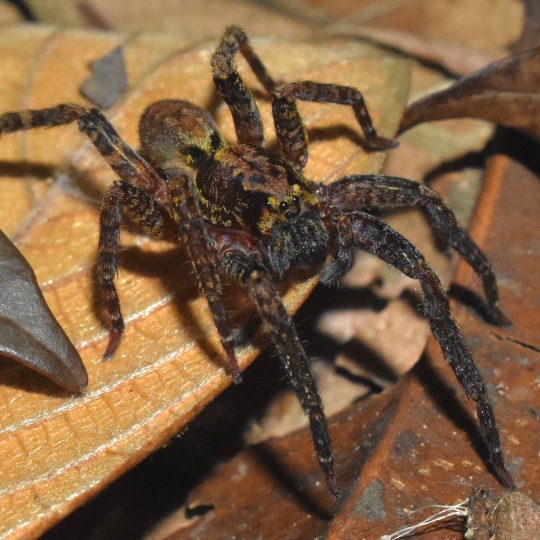
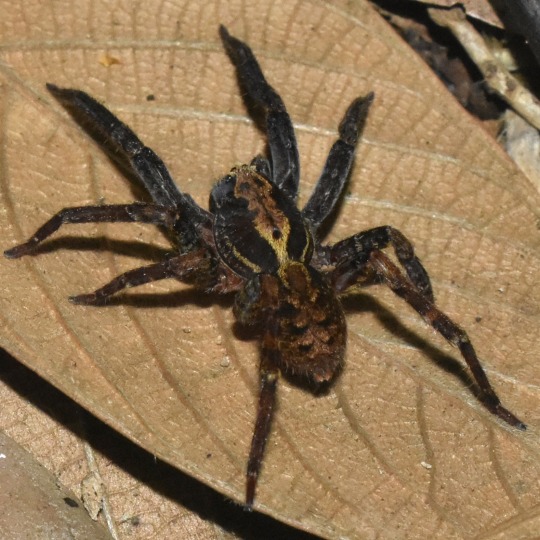
they’re sizable, chunky spiders, usually found sitting still or prowling through leaf litter for insect prey. the golden ones were quite common where I got these photos, with an adult or juvenile every few feet along the trail.
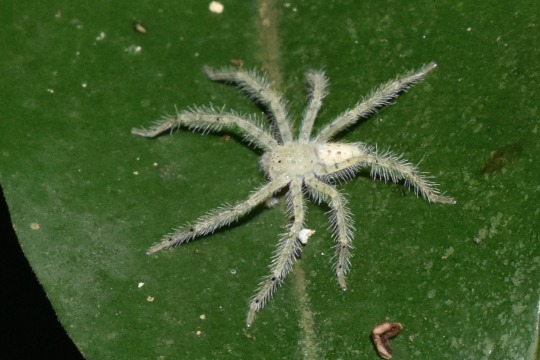
the genus Bowie was split out of Ctenus last year by Peter Jäger, who also named a huntsman spider after the same singer. I did see Heteropoda davidbowie, but no bright orange bristly adults, only this tiny snowflake of a juvenile
623 notes
·
View notes
Text
The Late Rodentocene: 20 million years post-establishment

Quill and Testament: Heckhogs of the Late Rodentocene
The descendants of the spiny bristleback, one of the earliest hamsters in the Early Rodentocene to evolve a unique defense mechanism against the first predatory huntsters, would eventually give rise to the heckhogs, a diverse clade of small omnivores distinguished by their defensive armament: stiff, bristly hairs modified into sharp quills that can be used to irritate or even injure any attacker that is brave enough to threaten them.
Some more basal species, such as the bristly itchrat (Spinopilosomus urticatus) retain the ancestral bristleback's defenses: sharp, loose hairs that can be rubbed off from its coat and kicked into an enemy's face to stick in its nose, eyes and mouth and cause significant irritation and discomfort, thanks to small barbs that can cause redness and swelling for several days or more.
However, more-derived species bear sharp hairs as a more permanent defensive feature, modified into hard, pointed and hollow quills that do not break off easily, and are instead a deterrent from the animal itself being grabbed by an attacker. Such is the case with the spiny-tailed rattratel (Echinomustelus doloricauda), a ferocious tropical omnivore whose spines are concentrated around its tail, making it difficult to grab from behind as it flees headfirst into its burrow. So effective is its defense that the rattratel will boldly try to steal food from large, dangerous predators such as the larger squeasels of its range, knowing that it can get away with it with little consequence. The shorter quills on the rest of its body can point in any direction, which prove helpful in burrowing, and if grabbed from the front, has a backup defense: loose flexible skin that allows it to twist itself free to bite back an assailant or strike it with its spined tail.
The thorn-maned beaverlion (Leocastor echiniuba) is similarly specifically armed: yet the spines of this heckhog are concentrated not around its tail and rear, but around its neck, forming a protective mane of quills. This is because this hardy woodland herbivore is highly territorial, and thus its defenses are against other beaverlions that it clashes with at the boundaries of its territory. With powerful incisors capable of chewing bark and tough plant matter, it became of importance to protect its vulnerable neck from the potential lethal bite of a rival. Propping themselves upright on their back legs and thick hairless tails, two opposing beaverlions can inflict painful bites onto its competitor as they wrestle and shove each other, but, thanks to the spiny manes, rarely become fatal. Ironically, most vulnerable are older males: while the increase in testosterone makes them stronger, tougher and more vicious, too much of it causes a thinning of hair that also causes them to lose many of their defensive spines, leaving their necks exposed. Faced with actual predators, however, beaverlions prefer to flee, escaping into burrows that are often built near the edges of bodies of water such as lakes and streams as an extra precautionary measure.
Physical damage is deterrent enough to most predators, but some take it even further: adding chemical warfare to the mix. The blazing quillcrest (Ambustuspinus cyanorrhinus) chews up poisonous plants to which it has built up a resistance to, and then applies the toxic mixture to its fur and quills when it grooms itself. Likely originating as a means to rid its coat of parasites, it has since become an additional layer of defense which it advertises with bold warning colors: ones that may not be all too visible color-wise to most creatures but make a striking contrast at Beta-twilight: one of the times the quillcrest is at its most active, foraging for seeds, fruits, insects and grubs. Its quills are barbed, allowing them to break off easily and remain lodged in an attacker, and the presence of a toxic chemical cocktail smeared onto its spiny coat serves to make the encounter more unpleasant to any would-be predator.
But spines are not only good for just defense. The iridescent bluehog (Segaspinus cyanopilus) has found a strange new use for these weapons: as organs of display used to attract and court mates. While normally having small, stubby quills most of the year, during the breeding season male bluehogs grow long, iridescent quills, with hollow structures that refract light in shades of the blue spectrum, which they noisily rattle to display to and attract any nearby females in search for a mate. While to most other small animals such a gaudy courtship display is practically a death sentence, the bluehog can afford to be conspicuous as its display structures are themselves defensive weapons: a painful mouthful of quills for any predator that tries to take advantage of the emergence of courting males during the breeding season. Once courtship is over, the males shed the long spines, returning to their drab, short-quilled original appearance through the rest of the year.
The heckhogs in the Late Rodentocene would prosper throughout the Therocene, but would ultimately find their match in the coming of the Glaciocene, which brought massive glaciation and the spread of tundra across temperate areas and left very little tropical forest habitable. To the species dependent on tropical forested regions, such as the rattratels, quillcrests and beaverlions, it would spell their end: but to smaller, more adaptable and more temperate-dwelling species like the bluehogs and itchrats, it would be a disaster they could weather through-- and carry on the legacy of the heckhog lineage into the Temperocene era.
-----------
45 notes
·
View notes
Text



Robber fly.
First shot is taken with a reversed 28mm, the others are shot with a 105mm Sigma on tubes, Nikon gear, flash and diffuser.
"The Asilidae are the robber fly family, also called assassin flies. They are powerfully built, bristly flies with a short, stout proboscis enclosing the sharp, sucking hypopharynx.
The name "robber flies" reflects their expert predatory habits; they feed mainly or exclusively on other insects and, as a rule, they wait in ambush and catch their prey in flight."
(from iNaturalist)
54 notes
·
View notes
Text
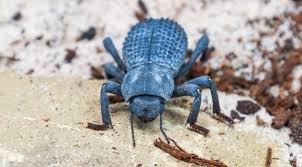


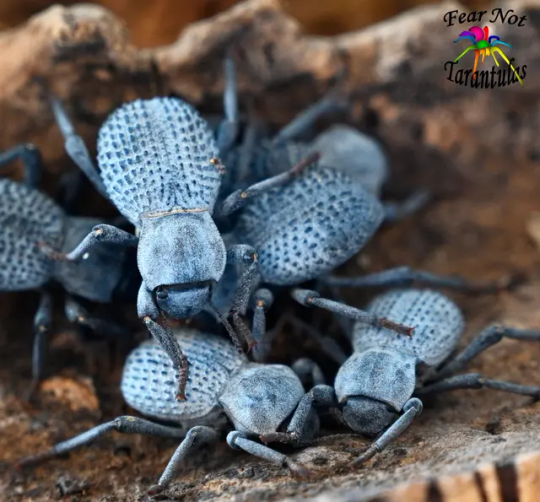

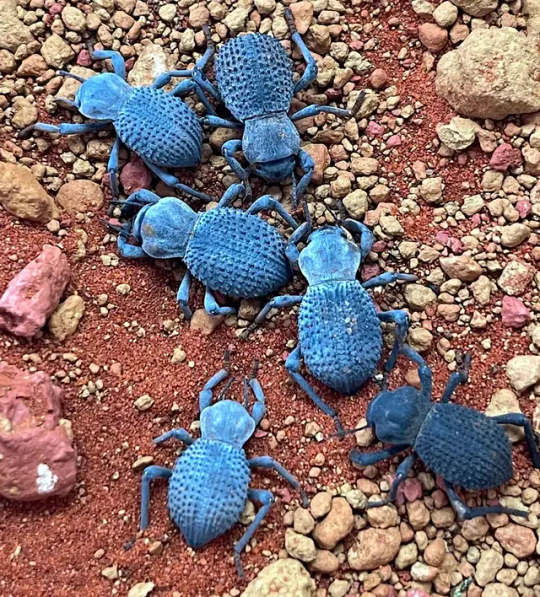


Asbolus verrucosus better known as the desert ironclad beetle or blue death feigning beetle, is a species of darkling beetle native to southwestern United States and northwestern Mexico, where it inhabits the Sonoran and Mojave Deserts. These primarily crepuscular omnivorous insects feed upon carrion (chiefly the carcasses of other insects), fungi, lichen, fruits, seeds, and other plant material. Blue death feigning beatles are known for their remarkable ability to play dead when they feel threatened by predators such as spiders, lizards, birds, and rodents, hence why they’re called death-feigning beetles. These beetles are also known to be remarkably well suited to there desert environment with multiple adaptations for heat resistance. One such is coating of wax on their exoskeleton which works to both prevent moisture loss and protect against solar radiation. Said wax coating is also what gives these beetles there distinctive steely blue coloration. Because of this higher humidity can cause the beetles to become darker in color. Reaching around .71 to .83 inches (18 to 21mm) in length from head to abdomen, males are slightly smaller than females, and have bristly red hairs on their antennae. The species name verrucosus, meaning 'warty', refers to the characteristic bumps on the beetle's elytra. Blue Death Feigning Beetles cannot fly (their wings are fused under their hard exoskeleton shell. Breeding often occurs during summer and blue death feigning beetles require specific soil and humidity conditions in which for both there eggs to hatch and larvae to pupate into adults, as such they are notoriously difficult to breed in captivity. If the burrowing meal worm like larvae successfully pupate into adult hood a blue death feigning beetle may live up to 8 years.
#pleistocene pride#pliestocene pride#beetle#bug#insect#animal#animal facts#desert#desert ironclad beetle#blue death feigning beetle#darkling beetle
20 notes
·
View notes
Text
You - Part 5
by COVAHtk
Description: A girl (you) with an overpowered cursed technique but plagued by her *cough* slut tendencies and impulsiveness attempts to become a powerful sorcerer, but will her behavior hinder that?
Status: Complete
Other: Yuji Itadori x fem/reader, story contains smut, fight scenes, dark humor, smau.

The bond between you and your teammates grows stronger with each passing day. The rigorous training sessions and challenging missions have forged a deep sense of trust and camaraderie among you. Gojo's guidance continues to be invaluable, pushing you to your limits and beyond.
One morning, Gojo calls everyone together for an important announcement. "We've received reports of a powerful curse causing havoc in a nearby town," he says, his tone serious. "This mission will be challenging, but I have full confidence in your abilities. Prepare yourselves and we will have to cancel the upcoming tournament.
You and your teammates gear up, the weight of the mission settling over you. The journey to the town is filled with a tense silence, each of you lost in your thoughts and preparations. As you arrive, the sense of foreboding is palpable, the air thick with malevolent energy.
Gojo leads the way, his presence a reassuring beacon. "Remember, work together and trust in your training," he says, his voice calm but firm.
Your technique allows you to float effortlessly in the air, with complete control over every inch of the room. Your senses are heightened, observing the tiniest dust particles and the paths they take as you breathe deeply. The curse lunges at you, striking your head directly. Instantly, it is plunged into a nightmarish hallucination. The curse finds itself in a blank room with walls made of light brown wood, resembling the interior of a sauna.
The curse is bewildered, its environment transforming in an instant.
The temperature in the room rises relentlessly, causing the curse to become drenched in sweat. Thick, bristly hairs sprout from every millimeter of its skin, making even the slightest movement excruciatingly painful.
Its body begins to swell with layers of greasy, blubbery fat, expanding until it fills the cramped room. The curse's skin stretches and tears, leaking foul-smelling fluids.
Seconds pass for you, but for the curse, centuries drag on. It suffers in an unbearably hot, moist, and itchy environment, transforming into a grotesque, dense mass of fat, hair, and sweat. The curse's body oozes with pus and grime, the air thick with the stench of decay.
Every breath the curse takes becomes a laborious ordeal, its lungs struggling to expand against the crushing weight of its own grotesque bulk. The air, thick with the scent of sweat and decay, becomes harder to inhale, burning its throat with every gasp. The relentless itching drives the curse to claw at its own skin, nails tearing through the thick layers of fat and hair, peeling away flesh and exposing raw, bloody tissue beneath.
Its eyes bulge and water from the intense heat and pressure, vision blurring as it tries to make sense of its surroundings. The constant, maddening sensation of crawling insects beneath its skin only adds to its torment. The curse's ears fill with the cacophony of its own pained moans and the squelching sounds of its body shifting and oozing, a symphony of suffering that plays endlessly in the sauna-like prison.
After thousands of years of relentless torture, the curse's mind shatters, leaving it a brain-dead husk.
Your technique must have felt physical attacks would be waste of time and conjured up a new domain expansion.
Your Domain expansion ends causing the real body of the curse to fall to the ground on its knees. The curse still pulls breath but falls lifeless banging its head against the floor.
You stand there, breathing heavily, a sense of relief washing over you, having no clue what just happened. Gojo approaches, a proud smile on his face. we handled it. Let's head back and debrief."
As you make your way back to the dojo, the adrenaline begins to fade, you think about what happened to the curse when you touched it. This mission has tested you in ways you hadn't anticipated, but you've come through stronger.
Back at the dojo, Gojo gathers everyone for a debriefing. He praises the team's efforts and provides feedback on areas for improvement. As he speaks, you feel a deep sense of gratitude for the opportunity to learn and grow under his guidance.
The days following the mission are filled with a mix of intense training and moments of reflection. You and your teammates continue to push each other, driven by the desire to improve and protect those in need. The bond you share is unbreakable, each of you drawing strength from the others.

One evening, after a particularly grueling training session, you and Yuji decide to take a walk through the nearby forest. The night is clear, the stars twinkling above, and the gentle rustling of leaves creates a serene atmosphere.
As you walk, Yuji turns to you with a thoughtful expression. "Y/N, do you ever think about what the future holds for us?"
You nod, a smile playing on your lips. "All the time. I wonder what challenges we'll face and how we'll grow. But I know that as long as we're together, we can handle anything."
Yuji squeezes your hand, his gaze intense and sincere. "I feel the same way. I want us to face everything together, no matter what."
The moment is intimate and heartfelt, the bond between you and Yuji growing even stronger. As you walk back to the dojo, you feel a sense of peace and happiness that you’ve never experienced before.
#fushiguro yuji x reader#smau#jjk smau#jjk#jjk x reader#jujutsu kaisen#jjk fanfic#yuji itadori#yuji smau#jjk fluff#yuji fluff#fluff#angst#jjk angst#jujustsu kaisen x reader#jujutsu kaisen smau#jujutsu kaisen yuji#jjk x y/n#jjk x you#jjk fic#jujutsu kaisen x you#jjk x reader angst#jjk x reader fluff#jjk series#itadori#yuji x you#yuji x reader#yuji fanfic#yuji smut#itadori yuji smut
16 notes
·
View notes
Text
Rango (2011)

Las Vegas was a mistake. Where films like Chinatown or Who Framed Roger Rabbit tackle the dark side of the development of Los Angeles in some form or other, Rango is in a way a similar approach to the monument of hubris and human folly in the desert that is Sin City. When would-be thespian and all-around chameleon out of his habitat Rango stumbles into a frontier town called Dirt, he quickly learns they’ve got a water crisis. And as is tradition with this sort of matter, of course the politicians are never the true controlling or corrupting hand in the mix. Never! There are plenty of colorful characters and Wild West archetypes to explore, from the feisty gunslinging love interest holding out on selling one final land deed to the mayor to the gaggle of saloon ne’er-do-wells to the old dude with the bristly mustache who sounds like a rusty door hinge. As a chameleon, if you will, Rango slips effortfully between various Wild West caricatures himself as the need fits him, easily digging his own grave deeper and deeper only to escape at the last second. Similarly, a heavy leaning on the visual stylings of John Ford Westerns makes for fun action set pieces where the filmmakers combine gambits we’re familiar with and this specific world. An endless pursuit of stolen water is replete with low-horizon images of our heroes on roadrunner-back as they traverse Monument Valley. Bats with Gatling guns and musical accompaniment dive-bomb our fleeing caravan after a bottle of water has been retrieved, and make airplane noises when they crash and explode. This race to and from becomes, if you will, Mad Max: Furry Road.
The approach to character design in this is equal parts clever and gleefully horrifying. The bristle-mustached feller is an owl, so his pointed nose is his upper beak, but his lower beak? What happened to it? Where did it go? Why does that bar wench frog lady have giant frog tits? Why does the mayor’s turtle face remind me so much of the bad guy from A Bug’s Life? There’s also a very perplexing Goofy and Pluto situation. Most bird characters in the film are sapient, and yet they ride roadrunners because it’s a fun gag. Our villain predators—Rattlesnake Jake and the hawk—are both more animalistic in form, but only one of the two speaks. Interestingly, both have fun metal mods: the hawk has a metallic beak tip, and Rattlesnake Jake’s tail is a Gatling gun. Why are some insects actual insects, and others part of this town? The answer is “because a character designer thought of a sick-ass way to make a snaggle-toothed scorpion dude for one scene so it made the cut” and fuck it, that’s FINE.
In a year when meta is so exhaustingly oversaturated (oh boy, I can't wait for more Deadpool killmenow), it’s wild to see something so self-aware in an earlier form. Opening with commentary from our adorable narrator mariachi burrowing owls who ferry us through the film, the story wastes no time in letting us know it knows what it is. Rango literally breathes condensation on the fourth wall to draw a rectangle and put himself in a frame, which is both the screen and the glass of his habitat from which he is about to escape. He will break the fourth wall, if you will. Along the way he encounters briefly “himself” in a nod to Fear and Loathing in Las Vegas, and the Spirit of the West is a gruff Clint Eastwood type who also draws that same rectangle. I mean, it’s no Ryan Reynolds making asinine pop culture references which will be irrelevant 15 seconds after release, but it’s something.
THE RULES
SIP
Someone says 'quest' or 'water'.
The mariachi owls show up in a scene.
Direct camera address.
Isla Fisher's "Western" accent gets very dicey.
BIG DRINK
Humans appear in a scene.
Someone gets pricked by cactus thorns.
The hawk shows up.
#drinking games#rango#gore verbinski#johnny depp#isla fisher#comedy#action#action & adventure#animation#alfred molina#how did roger deakins dp this thing?
8 notes
·
View notes
Note
i am definitely one of those people who gives their cats warrior names so here r my parents' two young cats:
"Cloudbound"-> Haipipip "fat cloud bouncing." He is a big floofy ragdoll himbo and he reminds me of a cotton swab.
"Flywhisker" -> Ffawshusspap "keen fruit fly." There's not yet words in the lexicon for her name I think, so I used "bee sensing with carpal whiskers" as a placeholder which is kind of what I want to get at but she's really more of a fruit fly yk? And I couldn't find a personality adjective for an observant cat or a proficient hunter, which I think could be a good addition regardless. Anyways she is a very skittish and twitchy little black and white spotted cat and i am her favorite person because i walk quietly.
Don't feel obligated to answer this ask, i just wanted to share :]
FLIES
Fruit flies are actually quite rare, and mostly only seen in ThunderClan because of their notorious love of including fruit in their recipes. This climate is very cold, and fruit flies are most common around human settlements where there's a year-round supply of fruit (pre-infested!) coming in from supermarkets.
So I'll add fruit flies when I get around to a legitimate entry on flies as a whole, but for now, there's a whole bunch of teeny flies that could be very fitting here.
Let's start with the broad "categories" of "Fly" that Clan Cats have plus some related words;
Fly (Generic) = Usprr Any insect that primarily flies to travel, but is not a butterfly, dragonfly, or midge. Bees are a type of Fly in Clanmew. (Midges include craneflies, robberflies, and mosquitoes)
Waste = Bloh Translates directly. A waste. Something that can't be used.
Gall = Oorp Swollen bumps and shapes that rise off plants to house certain types of insects, very popular with certain types of flies, but also used by some mites.
To Harmlessly Pretend/To Pretend To Be Busy = Aweerron/Aweerro/Aweerr This is a REALLY hard verb to translate into English. Translated directly, it means "doing the act of being dandelion-yellow." Translated roughly, it means to don the color yellow so you're left alone by something with a greater threat-level. It can mean 'compliance,' or it can mean to 'mind your own business,' or it can even mean 'looking busy.' A verb that describes several animals, but especially types of flies, of which bees are a type. Their yellow coloration acts as a deterrent to bigger animals who want to avoid being stung. If you've ever been at work and just done something pointless when the boss rolls around, so you don't get assigned more work, you were doing this.
Maggot (of any fly) = Ulae The most general term for baby flies of all types. Also used for bee larvae. NOT derogatory in Clanmew.
Maggot (of green bottlefly) = Huli The medicinal maggot, a VERY important species for use in treating SEVERE wounds.
SPECIFIC CATEGORIES OF FLIES
Hover Fly = Hafrr Little flies capable of a true hover, coming in various odd shapes, but most are dandelion-yellow. Just like butterflies, a fly that is capable of performing this difficult flight pattern is highly respected, but in a cutesy, diminutive way. Hover flies are primarily pollinators, seen around flowers. Being likened to a hoverfly is like being called "spunky."
Building Fly = Kyybr Most bees, wasps, hornets, certain gall flies. Flies that build another structure. Ants temporarily become these at certain times of the year, according to the Clan cat interpretation of an ant's nuptial flight. There are a TON of other subtypes under this, wasps, solitary bees, swarming bees, etc, which I'll get into some other time.
Bristle Fly = Bfurr Probably what you imagine when you hear "fly." Round, bristly, buzzy things, which are often attracted to rotting things and waste. A little fruit fly is a type of bfurr, but so are bottleflies and the golden dung fly. Some flies which are not drawn to decaying matter, such as the Red Parasite Fly, get lumped in here too.
Lace Fly = Honrr Clear-winged, slender insects. Includes scorpionflies, some sawflies, actual lacewings, and the bay sucker.
And lastly, a couple of interesting species.
Scorpionfly (Panorpa Communis) = Yykrn The web-pilferer. Named for its habit of snatching the prey of spiders right out of their webs!
Cleg (Haematopota pluvialis) = Grawr The MOST annoying fly in the entire Clans, absolutely detested. A nasty creature whose bite contains an anticoagulant, causing it to bleed profusely. Common in WindClan and near the edges of conifer forests (such as the plantation near ShadowClan). Considered a lot worse than mosquitoes, which are just itchy.
Marmalade Hover Fly (Episyrphus balteatus) = Fsi Yes. Marmalade can be a valid warrior cat prefix if you'd like <3 The most common hoverfly, traveling in swarms and looking almost exactly like a bee. Their maggots kill aphids and the adults pollinate flowers, causing them to be looked at especially fondly in ThunderClan.
Green Bottlefly (Lucilia sericata) = Holibf The species that is attracted by Clerics so its maggots can be used in medicine. A fly species you're definitely already familiar with, for its shiny, green abdomen.
38 notes
·
View notes
Text
Horklumps are fascinating, if somewhat irksome, creatures that have baffled magical biologists for centuries. Though at first glance they might be mistaken for harmless fungi, a closer look reveals them to be very much alive—and not exactly welcome in a gardener’s prized patch. Native to the northern regions of Scandinavia, Horklumps have spread across Europe, thriving in damp, shaded environments where their bristly, fleshy bodies can blend into moss and undergrowth.
Physical Characteristics
Horklumps are usually around five inches tall, with a fleshy, pinkish hue. Their bodies are covered in spiny black bristles that serve as both camouflage and a deterrent to some predators. They resemble a cross between a squat mushroom and a sea anemone. Rather than roots, they have a dense network of thin tendrils extending below the surface, which they use to burrow into the soil in search of small insects, worms, and nutrients. This invasive root system makes them highly destructive to garden beds, as they drain the soil of its fertility, leaving it barren and difficult to rehabilitate.
Behavior and Ecology
While Horklumps don’t appear to move at first, they are surprisingly active below the soil. Their tendrils are highly sensitive to vibrations, allowing them to detect insects and other small creatures that they consume. Horklumps propagate rapidly; a single Horklump can produce dozens of offspring in just a few weeks. Once they establish themselves in an area, they spread quickly, with new colonies sprouting wherever conditions are favorable.
Horklumps are especially troublesome to magical gardeners because they attract garden gnomes, who see Horklumps as a delicacy. When Horklumps infest a garden, gnomes are sure to follow, leading to all manner of chaos as the gnomes burrow, steal trinkets, and generally make a nuisance of themselves. This symbiotic relationship has led to entire fields being overrun by both species, much to the frustration of their human neighbors.
Magical Properties and Uses
Though troublesome, Horklumps are not without value. Their bristles contain a mild toxin that has interesting properties when used in potion-making, particularly in potions designed for mild paralysis or numbing effects. Horklump bristles are also used in a few healing salves and ointments, though they require careful processing to neutralize their toxic properties.
Despite their unappealing appearance, Horklumps have attracted attention from magical biologists because of their resilience and adaptability. Some researchers believe that their unique digestive processes could reveal insights into new fertilizers or soil-restoration methods. In controlled environments, their ability to break down organic material and mineralize soil has been noted, although most would balk at letting them loose in an actual garden.
Control and Eradication
Removing Horklumps from an area is no small feat. The most common technique involves a combination of magical and non-magical methods: uprooting, salting the soil, and, in extreme cases, casting spells to deter the growth of magical creatures. However, because of their rapid reproductive cycle, eradicating a colony requires vigilant monitoring over several weeks.
Alternatively, introducing a controlled number of gnomes to a Horklump-infested area can help reduce their numbers, as gnomes consume the fleshy parts of the Horklumps. However, this approach can be risky, as gnomes bring their own set of problems.





#harry potter#shifting realities#harry potter universe#hogwarts#shifting to desired reality#shifting to hogwarts#shifting community#shifting#hogwarts legacy#potion ingredients#potions#horklump#gnomes#magic garden#magic gardening#fantastic beasts#fantastic beasts and where to find them#magizoology
4 notes
·
View notes
Text
Fall Webworm Caterpillar - Hyphantria cunea
Following up from an earlier post that featured pictures of this soft-bodied, bristly insects, here you can see the extent of how much the tree is coated in silk. Since they've hatched, these Caterpillars have been quite busy in securing themselves and snacking, and the webbing is the bridge in between. Any plants webbed up have their leaves eaten (first the surface of the leaf, and then the leaf itself as the Caterpillars grow), and the silk house will grow. As the Caterpillars explore the tree they have hatched on, it's only natural that they would find more suitable spots to wrap in silk. In this video, the scale of web house production and density is quite evident. I'm not sure which part of the tree was settled on first, but there are multiple safehouses in use by these young wrigglers. Do note, however, while the Caterpillars are making use of the tree (feeding, excreting and living on it), the overall health of the tree is relatively good. Many leaves and branches are left intact and there is little/no damage to the trunk. After the Caterpillars have left to pupate, if the leaves can be free of silk, then they can fully recover. As such, this insects aren't as much of a pest as one would think.
Video was recorded on July 1, 2024 with a Google Pixel 4.
#jonny’s insect catalogue#ontario insect#caterpillar#fall webworm moth caterpillar#fall webworm moth#fall webworm caterpillar#owlet moth#tiger moth#insect#video#lepidoptera#toronto#july2024#2024#entomology#nature#invertebrates#arthropods#web tents#caterpillar nest#photography#animals
3 notes
·
View notes